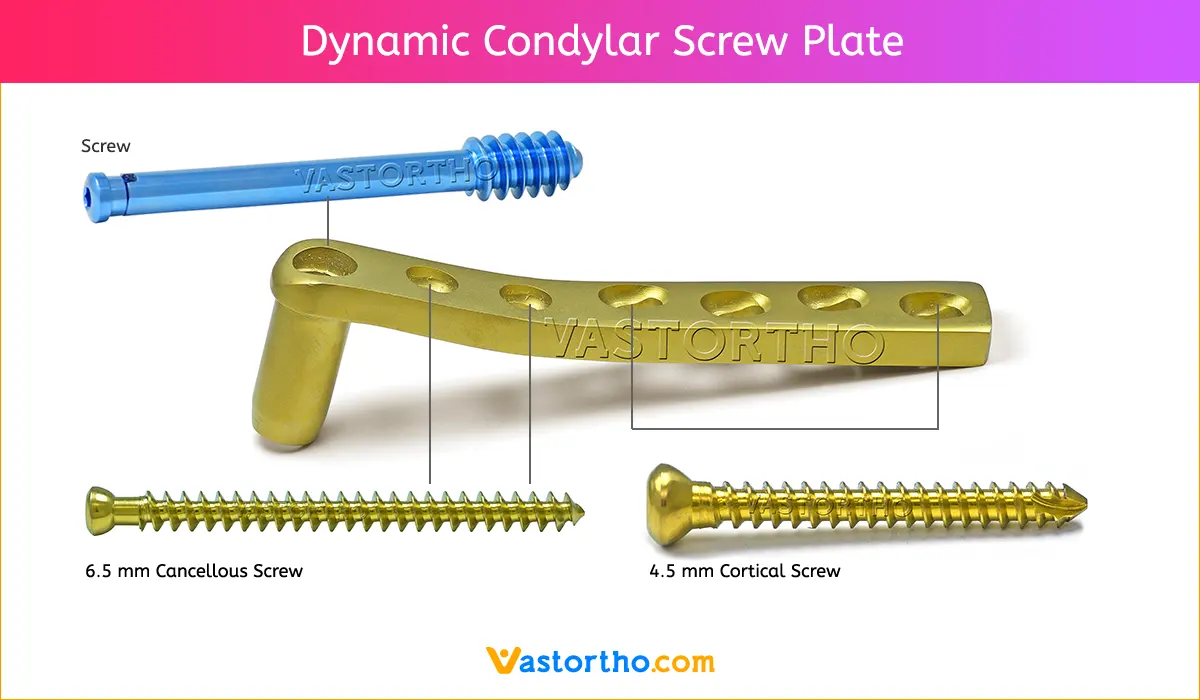Condylar Plate 95 Degree Specification, Uses, Sizes and Surgical Techniques
Condylar Plate 95 Degree is intended for temporary fixation, correction or stabilization of bones in the proximal and/or distal femur.

Condylar Plate 95 Degree Specification
- Plates are made of 316L stainless steel and Titanium.
- The Condylar Plate is available in 50 mm, 60 mm, 70 mm and 80 mm blade length. Number of holes in plate are 5, 6, 7, 8, 9, 10, 11, 12, 14, 16 and 18 holes.
- The angle between blade and shaft is 95 Degree in Plate.
- Two first holes in plates next to blade used for 6.5 mm Cancellous Screw and rest holes in plates used for 4.5 mm Cortical Screws.
- 6.5 mm Cancellous Screws available thread lengths are 16 mm thread, 32 mm thread and Fully threaded. Screws are available in a wide range of length with 25, 30, 35, 40, 45, 50, 55, 60, 65, 70, 75, 80, 85, 90, 95, 100, 105, 110, 115 and 120. Any extra Screws length will be made on order.
- 4.5 mm Cortical Screws are available in a wide range of length with 12, 14, 16, 18, 20, 22, 24, 26, 28, 30, 32, 34, 36, 38, 40, 42, 44, 46, 48, 50, 55, 60, 65, 70, 75, 80, 85 and 90mm. Any extra Screws length will be made on order.
- The number of screw holes per plate length is maximized, without compromising plate strength. This allows an increased number of fixation points with a smaller incision.
- General Instruments are available for Condylar Plate such as Plate Bending Press, Plate Holding Forceps, Plate Bending Pliers, Bone Holding Forceps, Bone Elevators, Bone Cutter, Bone Nibbler, Depth Gauge, Sleeve, Screw Driver, Trocar Sleeve etc.
Condylar Plate 95 Degree Uses
Condylar Plate is indicated for the fractures and revisions of the proximal and distal third of the femur in skeletally mature patients.








